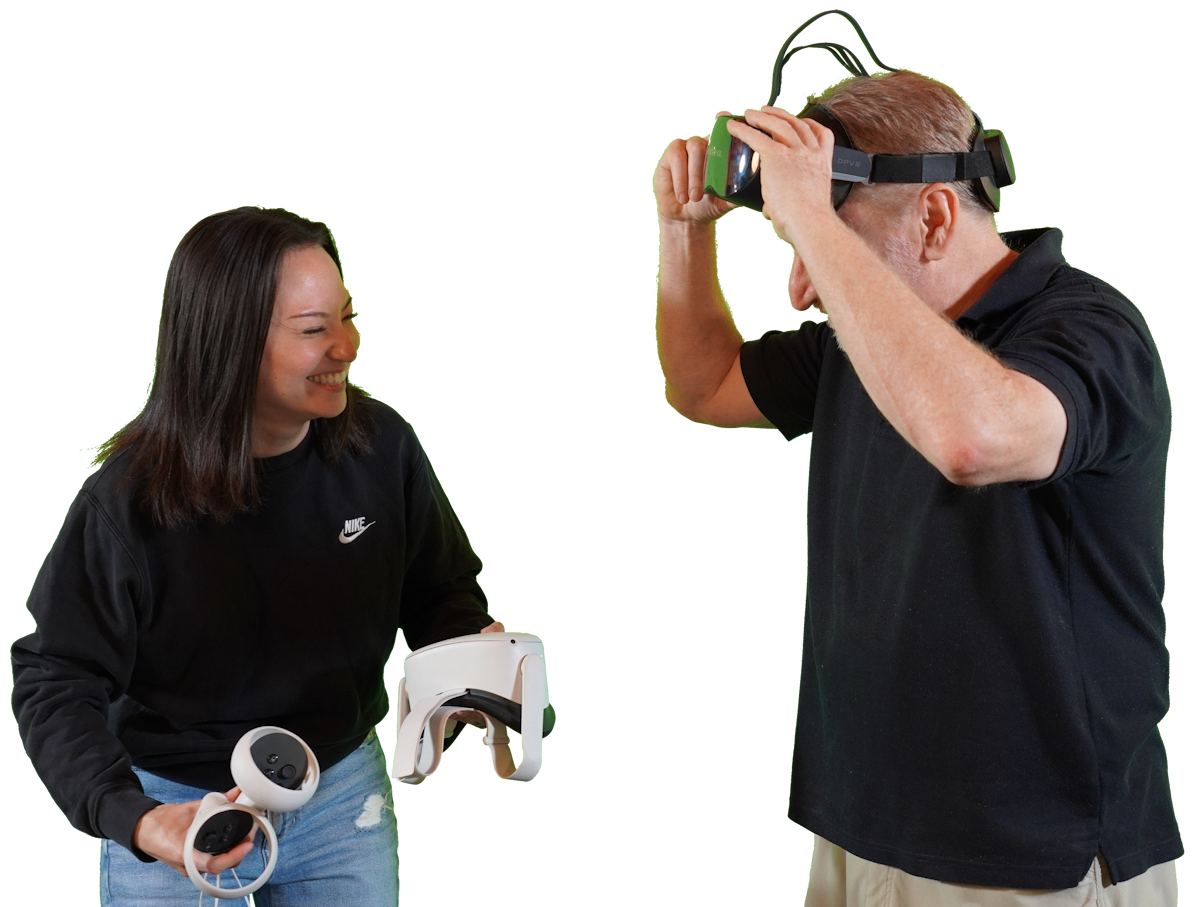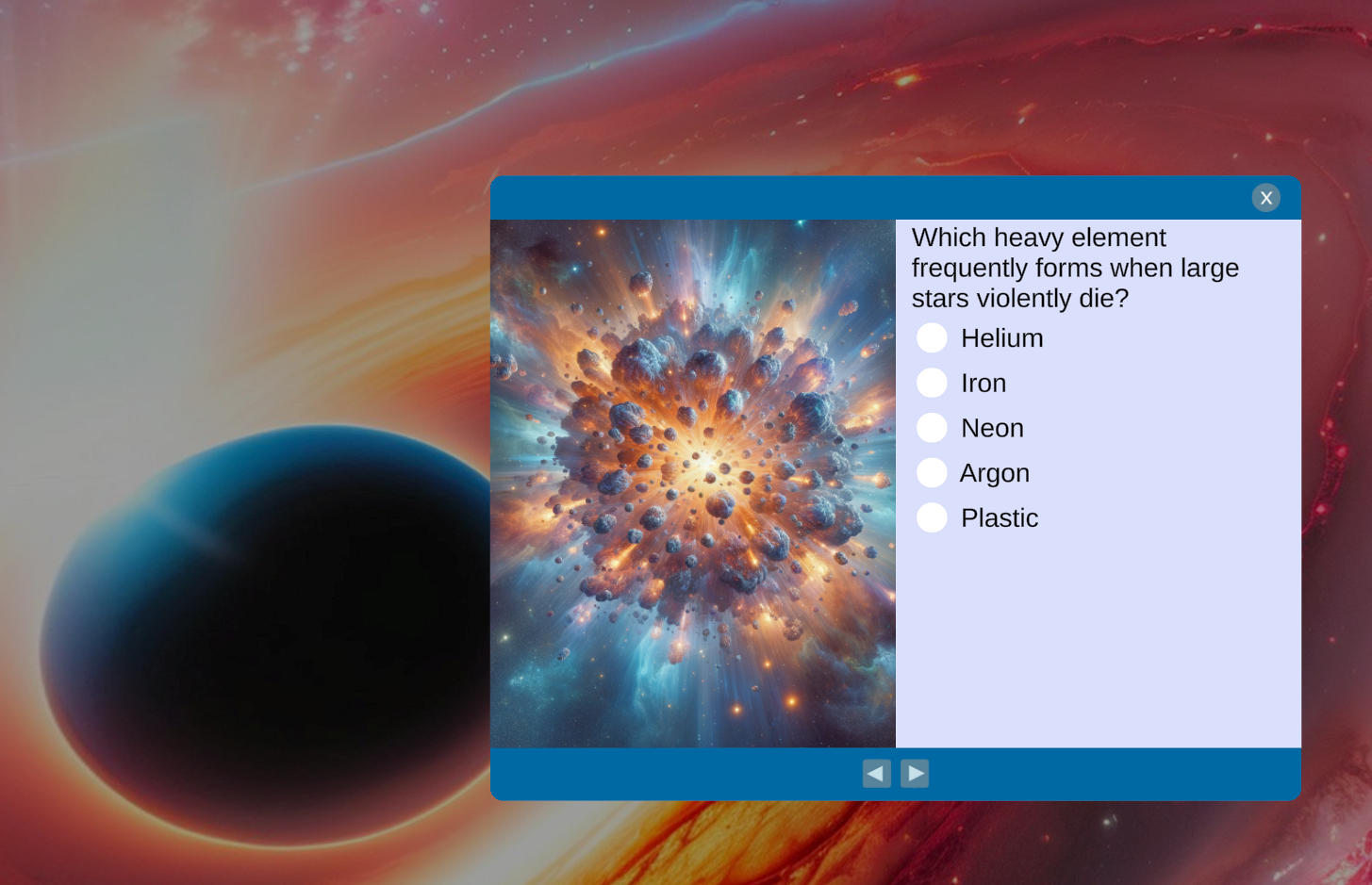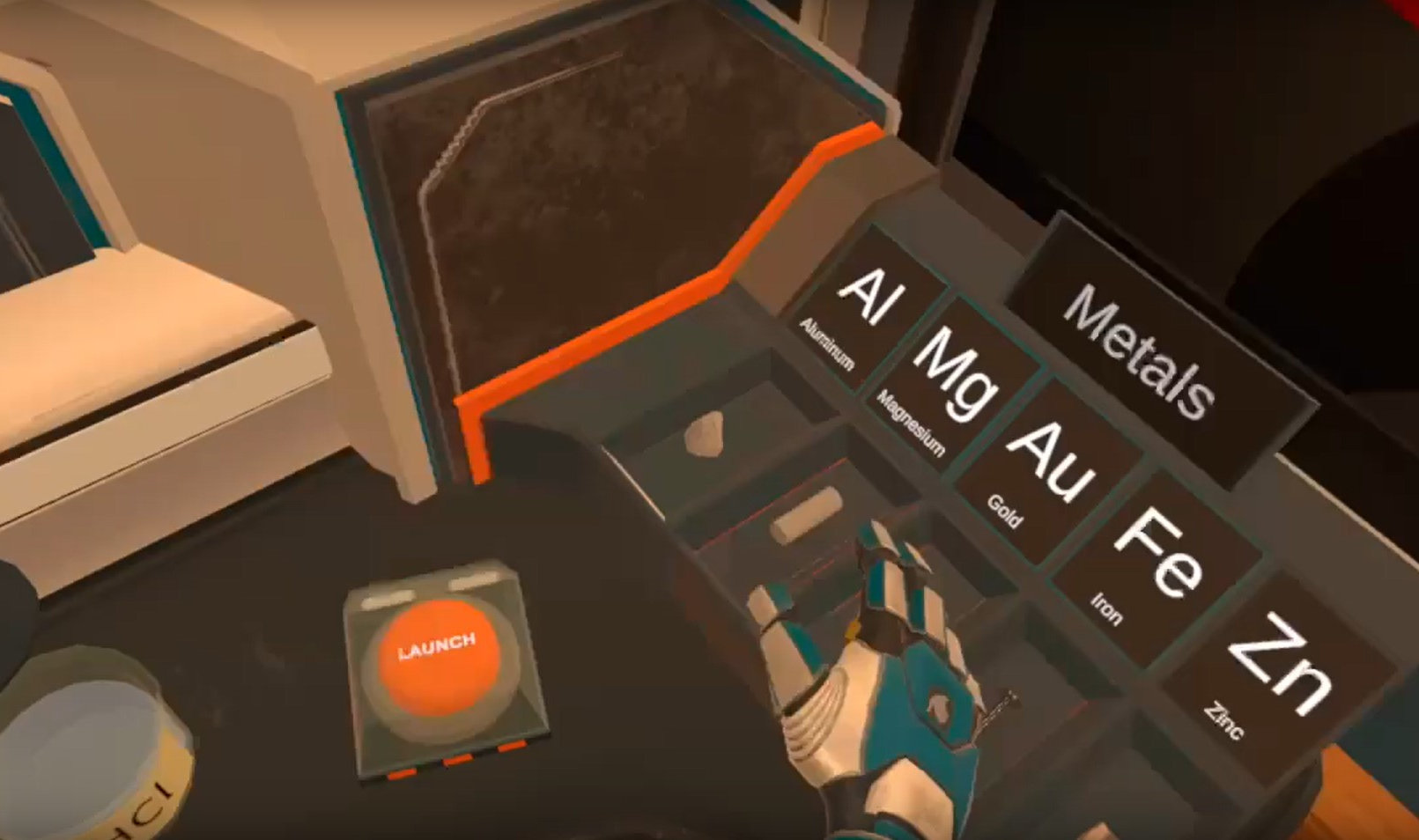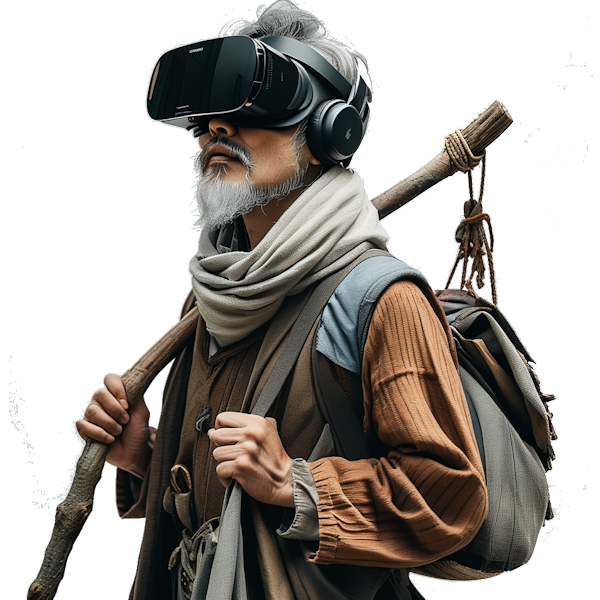VR IN EDUCATION
Learn More
VR in education brings so much value, and holds so much promise. So why are we "messing" that up?
(Note: "messing" was the 2nd choice of words)


- I am not a gamer, nor a typical VR enthusiast. I'm not a fan of the metaverse.
- I don't watch movies inside the environment, nor take meetings in VR. It's not my thing.
I've been a teacher for over 3 decades... in VR for education for the past 10 years. Pragmatism ensures I seek value and efficacy in designing a solution. VR in education is unique and absolutely needed in every classroom in the world. A bold statement, but I will back that up. In an overly distractive world, the ability to isolate a student in a virtual environment, free of disturbance and peer judgement, with appropriate learning content is, well... gold. Let's start there.

Basic requirements should include the following:
- A non-gaming, VR headset with specs to support real learning
- A wealth of pre-loaded content, across ages and subjects
- Interactivity, and content for higher cognitive needs
- In-environment assessment reported back to the instructor (this is ideal)
- Users stand in place, or sit in a swivel chair, and feel immersed in the environment
- Easy setup and ease of use, meant for an individual
The Sensible-VR headset is the best entry point for real, everyday VR usage, with multiple headsets in action across any institution.
We are focused on heavier cognitive needs, so this has been designed for 9 years old and up.

A 6 DoF device, designed for gaming, may add slightly more immersiveness, but it comes at a cost. In certain, isolated cases, learning can be enhanced when used for surgery, welding, jewelry making, and other areas needing dexterity and fine-motor control. That accounts for between 3-5% of overall learning. Don't sacrifice the other 95-97% of learning, which would then be affected by:
- An explosion of costs (the price of the headset is essentially immaterial)
- Significant privacy issues (often feeding into a social media platform)
- Possible degradation in VR benefits, such as a decrease in autonomy (gaming devices need supervision), an increase in distraction (movement and a front-facing camera which can take the user out of the environment), and an increase in perceived judgement (the Observer Effect from being tracked)
- Many other sacrifices need to be made (discussed in the videos)
A short introduction into Sensible-VR (SVR). The company was founded in Japan in October, 2024, with our educational VR product and platform to be launched in 2025.
SVR is very simply about providing educational opportunities to students everywhere, in a distraction-free, judgement-free environment. We achieve this by focusing our energy on:
- VR (and not XR) which is affordable and easy to use
- Offline (making it available to every school, worldwide)
- An abundance of good, interactive learning modules (300+ to start)
- A pathway to unlimited content, via MSVR
At SVR (Sensible-VR), a Japanese-Canadian company, we believe immersive education shouldn’t come with these hidden taxes. Our 3 DoF solution is:
- Simple to use (no IT army needed)
- Affordable and scalable (works in every school)
- Distraction-free and judgement-free (privacy respected, no constant tracking)
Education should be about curiosity, dignity, and inclusion — not about tariffs, tolls, and tech hurdles.
Step into the wild — without leaving your school. Learn about biodiversity.
Farming isn't just a job, it's a way of life. Be on a farm to learn more.
Meet Wang Zhenyi — an extraordinary young woman from 18th-century China.
Interact with the wait staff at a restaurant, and order a steak.
It's always a good idea to start with WHY. What is the reason for wanting to get your school or institution involved in VR in the first place? It's great to engage and excite learners, but why not use other means?
VR does afford certain opportunities that others don't. A distraction-free, safe (from peers) environment that encourages focused concentration is a great place to start.
It's always a good idea to start with WHY. What is the reason for wanting to get your school or institution involved in VR in the first place? It's great to engage and excite learners, but why not use other means?
VR does afford certain opportunities that others don't. A distraction-free, safe (from peers) environment that encourages focused concentration is a great place to start.
In this episode, Shannon Putman hosts Dave Dolan, an educator with over 35 years of experience and a passionate advocate for VR in education. The discussion dives deep into the nuances of VR technology, comparing 3 DoF and 6 DoF systems, their educational value, cost efficiency, and privacy concerns. Dolan shares insights from his extensive international teaching experience and provides a nuanced perspective on the practicalities and future of VR in classrooms, among other fascinating topics.
Today’s episode is a little different—in the best way. We're diving into a timely and important conversation about the role of 3DOF versus 6DOF headsets in education. It’s a topic that often sparks strong opinions, and we’re thrilled to have someone who brings a fresh, thoughtful, and even contrarian perspective to the table.
Joining me is Dave Dolan, CEO of Sensible-VR and a lifelong educator who has been deeply focused on issues of attention, accessibility, and equity in immersive learning. While I’ve long championed the potential of 6DOF for deep engagement and interaction, Dave challenges us to consider whether simplicity, scalability, and practicality,hallmarks of 3DOF, might in fact be better suited for real-world classrooms.
Katie Nieves Licwinko:
My last question is how do you think Veative is making schools and classrooms more inclusive and accepting of all learners and all learners’ needs?
Dave Dolan:
Right now on that front, like I said, we're looking at a way of adding the controller to a chair and identifying that there are other devices out there that kind of look maybe fancier or very cool. But the problem is that they might have two controllers and they won’t be suitable for every student. Sometimes, you have to step back a bit and get to the core of what it is that you’re trying to do.
Podcast Transcript
A deep dive into VR in education, and uses in the classroom. This podcast, hosted by Amanda Fox, Steven Sato, James McCrary, and Alex Chaucer tries to go beyond the headlines of virtual reality, and its implementation into schools.
Though recorded in 2019, it is no less relevant today.
VR (virtual reality) headsets come in 2 types, 3 DoF (degrees of freedom) and 6 DoF. Both allow immersive experiences, and both serve specific purposes. If someone says that one is inherently "better" than the other, without explanation, then it's the first indication that they simply don't understand. There is far more to the discussion as "better" is a relative term, judging something against something else. Immersiveness only? Sure. But add to the following to the discussion: usefulness, efficacy, accessibility, privacy, security, attention to learning outcomes, ease of setup, cost, and more, and "better" takes on a whole new meaning.
Distraction-free is more than a quaint term used for learning with VR, but an extremely important part of the entire idea. Removing distractions encourages a deeper connection with the content, and gets students on their way toward higher order thinking skills. That commitment to an idea, as shown by Christopher Reeves' character in Somewhere in Time, is the difference between surface acknowledgement of a idea or concept, and a deeper, more powerful, belief.
Part 2 takes a brief look at the cost of distraction. The cutting of learner focus means:
1. Reduced attention and concentration
2. Increased time required
3. Poorer comprehension and retention
4. Lower quality of work
5. Greater mental fatigue
SCILS = Self-Contained Independent Learning System
We often hear the phrase "you have to crawl before you can walk, and walk before you can run." Mastering the basics is important.
Virtual reality in education takes this concept even further by adding two more levels - swim and dive. Using VR for learning is incredibly valuable, but it needs to be implemented in a systematic, step-by-step way to maximize its benefits.
There are potential dangers of data collection from 6 DoF virtual reality headsets. 3 DoF headsets are different and don’t need to track your body position, and don’t collect the information that 6 DoF headsets do.
While this technology creates incredibly immersive experiences, it also collects an unprecedented amount of data about our movements and behaviors. Research out of Stanford University has shown that with just a few minutes of this data, AI can identify individuals with over 95% accuracy from a group of hundreds of seemingly anonymous users. This is shocking, but very telling... and very worrisome.
To fully appreciate the issue of space requirements, real estate, and movement when using virtual reality, let’s look at a user of a 3 DoF device in black, versus that same person using a 6 DoF device, in white.
In both cases, this student is fully engaged in learning, and fully present in the virtual environment. The girl in black remains in one small area, simply turning around to experience the virtual world. She can be standing in one spot, or seated in a swivel chair. If she has mobility issues or is confined to a wheelchair, she is still capable of using this device. Easy. Adding movement, as needed with 6 DoF, lowers inclusiveness, and could take the use of VR out of the classroom and into the gym, or other large space.
Not all educational content is created equal. In this video, we explore the crucial difference between passive content and true educational experiences, backed by cognitive science and learning theory.
Drawing on Richard Mayer's Multimedia Learning Theory and John Sweller's Cognitive Load Theory, we demonstrate why simply showing images - even in 360° - isn't enough for meaningful learning. We break down:
• The limitations of passive content
• Why interactive experiences matter
• The science behind effective educational design
• What real educational content looks like
Not all VR content is created equal! Many companies claim to offer thousands of "VR lessons," but are they truly educational? Or just… things to look at?
In this video, we break down the difference between real VR learning and misleading marketing. A true VR lesson isn’t just a 3D model or a 360° image—it’s structured, interactive, and actually teaches something. If a teacher still has to do all the heavy lifting, is it really VR education?
Constituent pieces, like 3D models and 360° images, have their place, and value. But to put them on equal footing as a well-made lesson or learning module is a stretch. These can also be thought of as a barometer for how a company presents itself, and what educational value they believe they bring. This can be shocking.
Educators and developers seem to be increasingly frustrated with Oculus, before you plunge into VR in your classrooms there are several issues and concerns you may want to hear out.
Known Issues Using Oculus VR in Classrooms
There has been a lot of hype in VR spaces about the Oculus Quest, and Quest 2, and its impact on the market. It is generally accepted, based on a great number of articles and postings, that the Quest has had a significant and positive effect on the VR market.
The Oculus Quest and Education
I would like to go even deeper into the issues to illustrate how the Quest may not be the right platform for educational purposes. This has become a long article, but will give you a clear-eyed look at what buying an Oculus Quest will mean for you, your school, district or institution.
The Oculus Quest & Education, Part 2
The Meta Quest, and the Oculus Go before it, is a wonderful device for gaming and entertainment. This is not at question. It is a great device!
Being a very good device does not confer status as an appropriate hardware choice, especially in the educaiton space, which can logially include healthcare, military, and corporate training, where data privacy must be properly thought out. The tracking of data is not a foregone conclusion or necessity, but a choice. That choice is on the user side. This is not about advocacy against the Quest, but about what non-monetary costs are involved in using the Quest.Be better informed.
Presentation with relevant facts about the Quest in Education (PDF)
This is an updated video expressing a point of view that the Meta Quest is not a device condusive to usage in a classroom, or in other instances such as corporate soft skills training, language learning, or hard skills such as those of an electrical lineman. While the Quest is a wonderful device for gamiing and entertainment, it was built for a single user, attached to a social media platform. Education and learning in general, is a completely different area, with very different expectations and needs.
The Quest is a wonderful VR device, and great for gaming and entertainment. However, when it comes to education, it is a far different story. Although I have a Quest and am a fan of the device, I cannot find a way to sensibly use this in a meaningful way in a class, school or district. I am unable to justify such a purchase, for education. None of this information is new, but still very relevant.
WILL 2025: A community of researchers, developers, practitioners, and institutions looking to best design and implement immersive technologies like augmented and virtual reality to power learning.
A presenation by Dave Dolan about the importance of providing practical, feasible, affordable solutions for VR in educaiton, to ensure that every student worldwide will have the ability to learn using this very powerful tool.
There is a huge benefit to having heavy VR content resident on devices. This is not simply a streaming issue, nor about your institution having WiFi access or not. This is about a practical, sensible means of getting the most out of your VR devices. If you only wish to do 1 task with the VR, then connectivity is not a big concern. However, if you wish to have a variety of things to do, by users of different ages and for different reasons, and don't wish to burden the overseers (teachers, managers) of this technology, then it's important to understand why "offline" can be a monumentally important point.
The term dof refers to Degrees of Freedom, which is an indicator the level of movement afforded a VR (virtual reality) user. The greater the number means the more immersive the environment. Of course, most would consider that to mean it's "better." That's not always the case. For education, or other large deployments, 3 dof may be desirable over a 6 dof device.
Better is very much a relative term.
When educational content is resident on a VR headset, it greatly increases the usability and practicality of VR in education. The base of what you want to do over a semester or longer should reside on the device. Of course, adding things along the way should never be disallowed, but those moments mean that WiFi needs to be set up and high bandwidth needs to be very reliable. The far majority of schools in the world have WiFi... that's not at all the issue. VR content is particularly large, and sending that out is not an easy task.
There are two main ways to create VR content... you can film a scene or create a scene. Filming is cheap and easy, and photorealistic. But it is plagued by extremely high file sizes which either take up a lot of room on your device, or is very difficult to manage (download to a device from the cloud, for example).
Created content is more expensive to make, which is the downside, but can allow for more interactivity and a different (albeit less photorealistic) view of a scene.
Veative Learn develops immersive technology solutions that have shown an incredible ability to educate, train, and solve real-world problems. This augments the performance of individuals and improves their grasp of technically-challenging concepts, enabling them to work better, smarter and safer. Chief Product Officer Dave Dolan joins me in this segment from 'Innovators'.
Building confidence is an extremely important part of language learning. All language learners start from a place of vulnerability, and the very real expectation of being ridiculed or laughed at. That is a tough thing for anyone. But when a good teacher can provide a safe environment for learning, motivation is seriously affected.
VR is the next best thing. By nature, it is a safe, judgment-free environment in which a student can learn.
Education disruption began to happen in the mid to late 20th century, from teacher-centric instruction to a learner-based model. VR did not cause that disruption, but can support the ideals of such a shift in educational ideals.
Differentiated learning, in a distraction-free, safe environment is all possible via virtual reality, and is another powerful tool in the toolkit of teachers across the globe.
An animated look at what a VR classroom can end up looking like, and a suggestion as to how it should actually be. Don't get stuck in a mindset of how you "think it has to be." The VR is a uniquely personal connection with difficult ideas, and as such, should be used to facilitate that personal, distraction-free connection. There is little value in turning that into a class-wide experience, which then creates a wealth of issues for a teacher.

Sensible-VR has a singular mission of ensuring that you learn how to critically judge the various options in the market, and get the most out of your learning dollars. We bring real educational value to schools. VR should be about connecting students with concepts, connecting teachers with students, and connecting districts with useful data and analytics. Forget the hype -- let practicality, feasibility, affordability, and sensibility guide your decisions.
Solutions